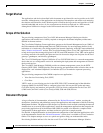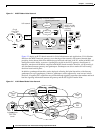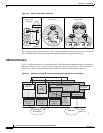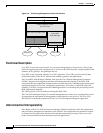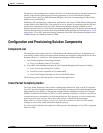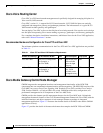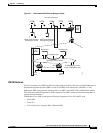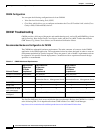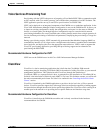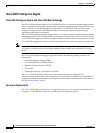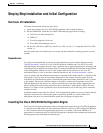Special offers from our partners!

Find Replacement BBQ Parts for 20,308 Models. Repair your BBQ today.

2-3
Cisco Internet OSS for VoIP: Infrastructure Manager Implementation Guide
OL-2706-01
Chapter 2 Provisioning
Solution Architecture
Solution Architecture
Open Packet Telephony Overview
As an introduction to the Cisco VoIP: Infrastructure Manager Solution’s provisioning component
applications and devices, the following overview of the emerging technology of distributed packet
telephony is presented.
Telephony is no longer solely the domain of Public Switched Telephone Networks (PSTNs). Software
and protocols that allow telephone calls over packet networks, such as the Internet, have entered the
market place. They are based on:
• the Media Gateway Control Protocol (MGCP) and related protocols such as the Simple Gateway
Control Protocol (SGCP) and Megaco/H.248
• the Session Initiation Protocol (SIP)
• H.323.
This discussion focuses on MGCP and H.323, which are both supported by the Cisco Packet Telephony
Center and the entire provisioning suite of applications in the Internet OSS for packet based voice
networks.
Examples of Open Packet Telephony Networks
Figure 2-1 depicts an example of an MGCP-based OPT network. (In this discussion, there is no need to
distinguish further between the different MGCP derivatives, Megaco, H.248, and SGCP.) The bearer
plane is responsible for the transport of the actual payload. Network elements within the bearer plane
need not be concerned with the specifics of telephony applications. Switches or routers between media
gateways at the edge of the OPT network provide for the actual bearer fabric (the data cloud), shuffling
data packets back and forth. The control plane is responsible for signaling processing and call control;
it is here that the actual call-processing intelligence resides. The components in the control plane are
commonly referred to as Media Gateway Controllers (MGCs). MGCs control media gateways by
instructing them when to set up or tear down connections, requesting notification of specific events for
further processing, and so on. They contain all the logic required for telephony applications, including
Signaling System 7 (SS7) signaling termination, collection of accounting information, and, very
importantly, directory functions and call-level routing based on dial plans. In terms of numbers of
devices, there tend to be much fewer MGCs than media gateways, meaning that call intelligence is fairly
centralized.




